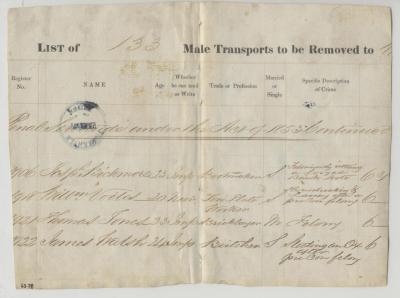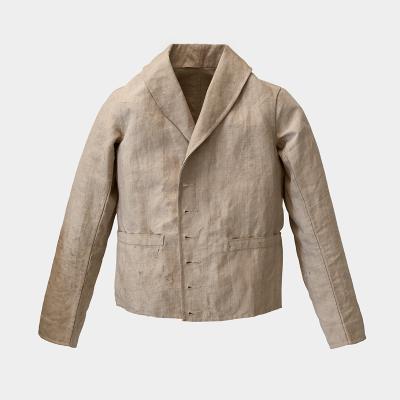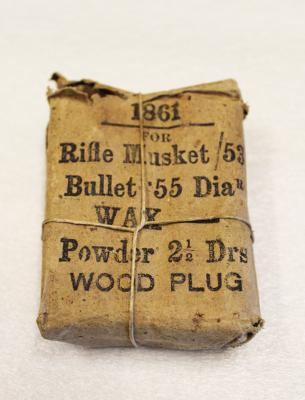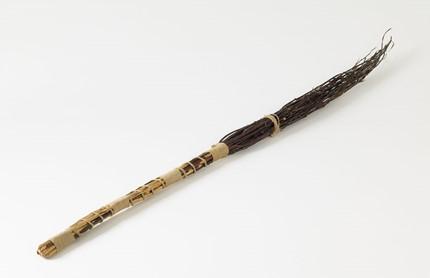PUNISHMENT BIRCH
1850 - 1962Long, thin, wooden, punishment birch, made up in besom fashion from lengths of birch twigs. The multiple birch twigs are loosely and broadly wrapped by cord to hold them together. One end is closely and tightly bound by two sections of cord, each 40mm wide and 125mm apart to form the hand grip. The other end of the birch twigs are unbound.
Used at Fremantle Prison to inflict corporal punishment.
Details
Details
From the early days of the Convict Establishment, it was not uncommon for prisoners to be sentenced to receive lashes for breaches of discipline. The most serious offence being escaping, or attempting to escape, from legal custody. A prisoner being flogged was secured to the flogging triangle, their legs tied to the base and their hands to the top. Their back was stripped bare and protective leather belts were buckled around their waist to protect their kidneys, and around their neck to protect their arteries.
Depending on their crime, a prisoner could receive up to 100 lashes. Once strapped to the flogging post, the prisoner received punishment in the form of flogging or birching. Flogging was undertaken with the cat of nine tails, a whip with nine knotted strands or cords. Birching used a bundle of long birch twigs bound together by a cord. After the lashes were administered, salt or brine would then be applied to the wounds to cleanse them and help them heal.
The flagellator was often a Prison Warder, sometimes specially appointed, who, for an agreed fee, was required to administer corporal punishment when necessary. Floggings were usually carried out with between six and ten prison officers present, together with those prisoners for whom it was thought witnessing the punishment would provide a warning and set an example. A medical officer was always in attendance, and they had the authority to stop the punishment if deemed medically necessary. However, if the punishment was stopped for medical reasons the sentence was not discharged, but rather resumed again once the prisoner had sufficiently recovered.
By 1940, regulations regarding the use of flogging at Fremantle Prison stated that, “the number of strokes must not exceed twenty five, and in the case of an offender under the age of eighteen must not exceed twelve, and the instrument must be either a birch rod cane, or the instrument commonly called a cat, which shall be made of leather or cord without any metallic substance woven therewith; provided that the cat shall not be used in the case of an offender under eighteen years of age.”
The last occurrence of a flogging being carried out as a prescribed punishment in Western Australia was administered at Fremantle Prison on 21 June 1943, at 9am. In this instance a prisoner, sentenced to receive 25 lashes of the cat, received 17 before the medical officer intervened. The last birching to be carried out at Fremantle Prison was administered on 20 August 1962, when a prisoner received 12 stokes. Corporal punishment and hard labour were not officially abolished in Western Australia until the Criminal Law Amendment Act (No. 2) 1992, which came into effect from 6 January 1993.
Other items from Fremantle Prison
- BOOK PHARMACOPOEIA
- SET OF SHACKLES
- REMNANT OF PAGE FROM SHIP'S REGISTER
- CONVICT DEPARTMENT WESTERN AUSTRALIA SCALE OF RATIONS
- PAIR OF UNARTICULATED HANDCUFFS
- Hammer
- WAISTCOAT FOR CONVICT
- JACKET FOR CONVICT
- JACKET FOR CONVICT
- Chain with padlock
- MODEL OF SAILING SHIP BY SHINER RYAN
- PACKET OF CARTRIDGES FOR RIFLE













